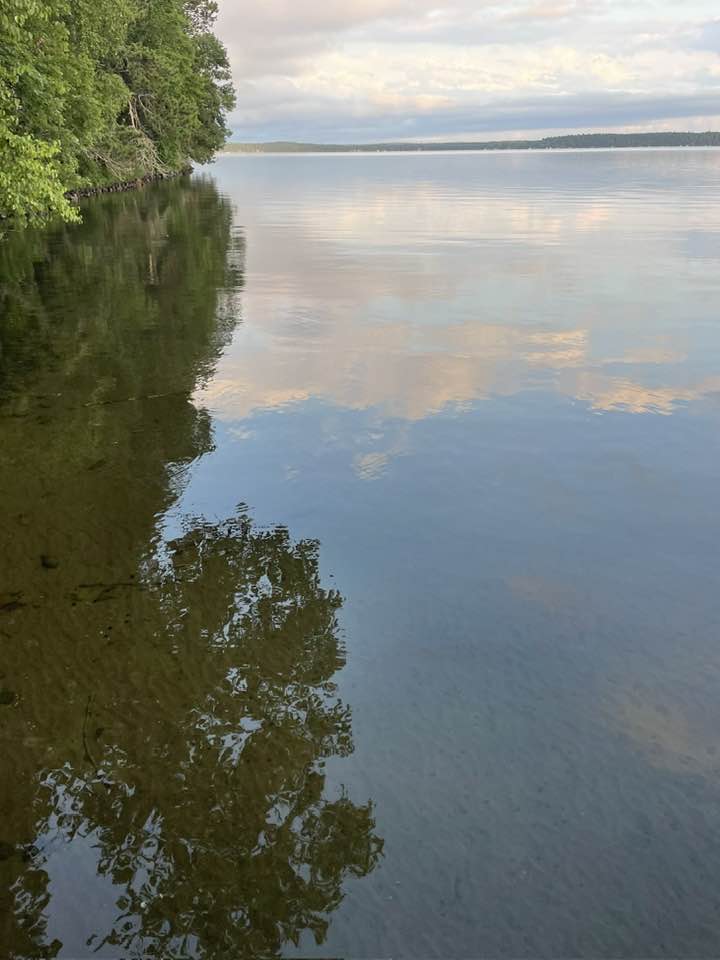JULY 15, 2024 – I’m certainly aware that aesthetics is an academic field unto itself; that for generations books, papers, lectures, debates, discussions have wrestled with the origins, nature and evolution of beauty—or more precisely, with our perception of it.
Today I ambled along the lakeshore up and down the well-established trail. I’ve walked this path thousands of times, and it’s never the same. How it appears one moment changes in the next, depending on the season, time of day, atmospheric conditions, and . . . even the hiker’s mood. Over the decades, much has changed—mostly the trees, which have grown taller, wider, and more numerous. As I always do along that course I contemplated all the beauty I encountered: an unfolding scene comprising numberless paintings, drawings, or photos that an artist could capture for later display in a gallery or museum where the works would be called “art”—and perhaps, “beautiful art. Because I was alone and in no hurry, I focused more than usual on color, lines, light, shapes, perspective, proportion, composition . . . and so on—all established according to nature’s complex patterns, the outcome of 3.7 billion years of cellular mutations, combinations, and permutations and 4.5 billion years of geologic and atmospheric forces and exposure to nuclear fusion 93 million miles away.
As my focus shifted back and forth between “miniatures” and the broader canvas, I realized that in nature’s display is the origin of humankind’s aesthetic sensibilities. The first artists among homo sapiens had no education or training in visual art, architecture, literature, any of the performing arts, or over-arching aesthetics—to the extent we now associate beauty with any of the foregoing art forms. With a stick, a chunk of charcoal or a sharp rock on one medium or another, our early ancestors simply mimicked what they saw in nature—the horizon, a plant, an animal, themselves. Over time they developed notions of what constituted beauty, and reflected them in the art they created.
And here we are millennia later with our perceptions of beauty, still honed and informed by and attuned to nature. Today I viewed nature’s beauty in a new light, one in which I adopted a perspective of complete passivity. That is, I didn’t look at a single cloud, trillium leaf, unpruned tree, fallen limb, moss-covered stump, random arrangement of stones, as something needing adjustment to fit my aesthetic standards. None of these features—individually or collectively—was intrinsically “artistic” or “beautiful.” What gave them any such quality was simply my visual perception of them—according to the cumulative reference points embedded in my nearly 70 years of consciousness and meanderings about the world. In consolidation these reference points form my “aesthetic standards.”
What gave me special satisfaction today was the wholly non-judgmental application of my standards. In the first place, who am I to “judge” the works of nature? But more to point, for what purpose? . . . unless perhaps, I were an artist intending to paint, draw or photograph one small square of nature’s mosaic for later display on a gallery or museum wall. Nature lacks pride and pretense. It cares not at all what we think of its arrangements.
These thoughts were liberating as they led me to greater humility about humankind’s relationship with nature. Our aesthetic constructs are of no consequence against her awesome power. Yet because of that awesome power, we’ve developed aesthetic standards. For us that is of enormous consequence.
Subscribe to this blog and receive notifications of new posts by email.
© 2024 by Eric Nilsson
